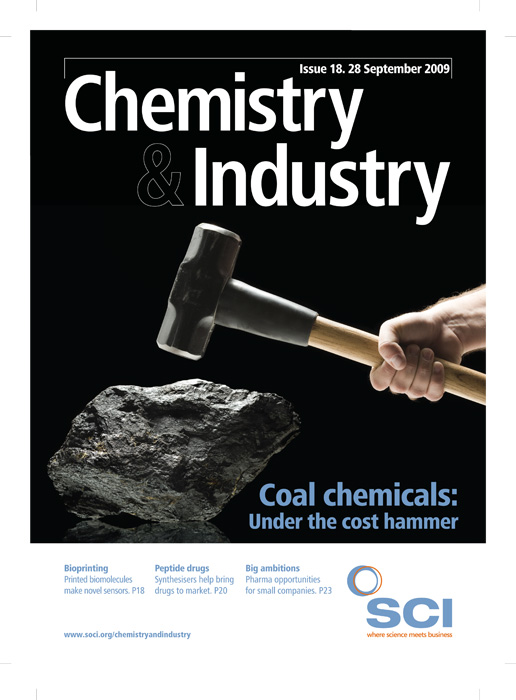When oil prices rocketed to record highs in
summer 2008, it appeared that the time for
chemical feedstocks from coal had come. Several
multi-billion dollar projects were in the pipeline
in countries throughout the world and oil prices
appeared to have nowhere to go but up. Now,
however, with the global economy in the doldrums
and recovery predicted to be slow, does the bright
future of chemicals from coal look as sparkly as it
once did?
Today oil prices have fallen from highs of $147/
bbl in June 2008 and now hover around the $70/
bbl mark, having dropped into the low 30s. Added
to this, the International Energy Agency (IEA) cut
its forecast for oil consumption for 2009 by 1m
bbl/day, a move that could further depress prices.
The IEA now predicts that oil consumption will be
down almost 3% on 2008 levels and has not ruled
out further falls in demand.
‘In the past the price of coal didn’t go up much
but oil was peaking,’ says Ed Glatzer, from the
consultancy Nexant. ‘Now coal prices are rising
too. At low oil prices there’s no compelling reason
to go with coal.’ He does, however, add that there
are compelling reasons for some countries, like
China, to invest in coal-to-liquids (CTL) technology.
Currently, China is highly dependent on expensive
ethylene imports, but what it does have is plenty
of coal. This coal can be turned in vinyl chloride
monomer, which can be used as a feedstock by
domestic chemicals plants (see Box).
But for coal to chemicals to make sense
economically it is, of course, dependent on cheap
coal – at least relative to oil. James O’Connell,
managing editor, international coal publications at
Platts, says that for a long time coal has been a
forgotten commodity, as prices remained relatively
static. The industry was rather ‘sleepy’, he adds,
but the market has had a rude awakening in the
last two-and-a-half years thanks to a combination
of constriction of supply, increased demand and an
extraordinary rally on oil prices.
Currently, as things stand, coal remains cheap
despite a price spike in 2008 caused by powerful
storms in the Pacific, close to Australia, that
restricted supply. ‘In Australia there were queues
in Newcastle of more than 70 vessels waiting
to load or unload their cargo [of coal]. A lot of
shipping got caught up there,’ O’Connell says,
adding that an increase in demand from China and
India also played a significant part in the price rise.
This led to prices peaking in June/July last year at
$230-$240/t. Prices have since fallen and are now
around the $60-$70/t mark.





